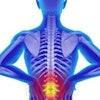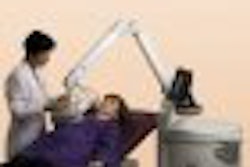Increased productivity, better image quality, and greater mobility will be the mantras for ultrasound manufacturers at RSNA 2006.

"Given the increased obesity in the American population, ultrasound's harmonics are improving our ability to make diagnostic decisions in patients with a compromised body habitus," said Carolyn Coffin, chair of the diagnostic ultrasound department at Seattle University in Washington.
As signal processing becomes more sophisticated, ultrasound may contribute to previously underexplored areas, such as musculoskeletal applications. "It is more cost-effective and easier for the patients to undergo an ultrasound scan" than some other modalities, such as an MRI, Coffin said. "We can perfect more muscles and tendons, and the rotator cuff is becoming a more common injury for people over 50."
In addition, more specialties are finding the modality to be a valuable adjunct to their practice. The convenience of having a readily accessible ultrasound system in a physician's office, for example, can save time for both the healthcare provider and the patient, and can hasten a diagnosis. "There has been some talk that ultrasound is sort of the stethoscope of the future," she added. "It is the one modality that everyone can use quickly to answer some questions."
The critical element, Coffin believes, is making sure in an office setting that the person conducting the ultrasound scan is qualified. "In the hands of someone who is not qualified, bad decisions can be made and problems can be missed," Coffin emphasized. "There will have to be a balance where an office wants to use ultrasound as part of their routine -- they need to have a qualified person performing the exam."
As will be seen at RSNA 2006, manufacturers are designing ultrasound devices to become increasingly portable and mobile. While that trend will enhance ultrasound's value in care settings, such as nursing homes and assisted living centers -- as long as qualified personnel operate the technology -- there may be a trade-off in ergonomics. Coffin noted that not all keyboards and monitors can be adjusted for a sonographer's height and use.
Here is a sample of the notable upgrades and technology advances that ultrasound vendors are planning for RSNA 2006.



















